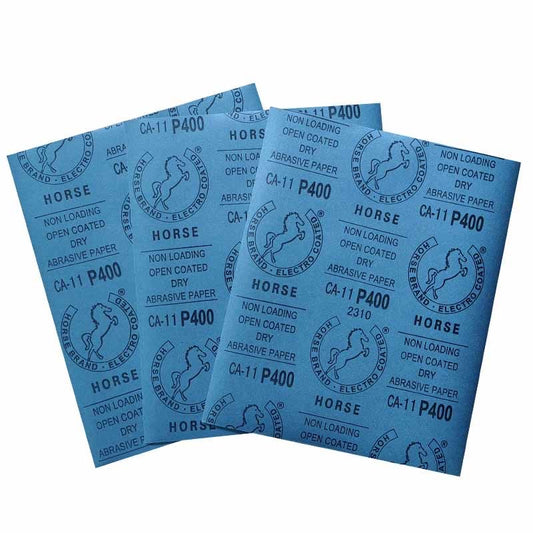-
High-Precision Sandpaper Sheet For Fine Grinding And Polishing
Regular price $0.00 USDRegular priceUnit price per
How to choose the right sandpaper?
Consider grinding material
Wood: Soft wood such as pine, fir, etc., can be used for preliminary grinding of coarse sandpaper with low mesh number, such as 80-120 mesh, quickly remove burrs and unevenness on the surface of wood; Then use 240-400 mesh sandpaper to further polish; Finally, fine sandpaper of 600 mesh and above is used for fine grinding to make the surface smooth. Hard wood such as rosewood, sandwood, etc., because of its hard texture, 120-180 purpose sandpaper can be used at the beginning, and then gradually refined and polished with 240-800 purpose sandpaper.
Metal: For common metals, such as iron, copper, aluminum, etc., if you want to remove surface rust, oxide layer or rough processing, you can use 100-200 purpose sandpaper; For fine grinding and polishing, 400-1000 mesh or even finer sandpaper can be selected. For high hardness metals such as stainless steel, the mesh selection of sandpaper can be similar to hard wood, but it needs to be adjusted according to specific requirements.
Plastic: Generally, 240-400 mesh sandpaper is first used for polishing to avoid scratches or deformation on the plastic surface caused by too thick sandpaper mesh number. If it is a transparent plastic, in order to obtain a highly transparent surface, it may be necessary to use 600-1200 mesh fine sandpaper for fine treatment.
Finish: In automobile maintenance or furniture painting, if you want to polish the old finish, usually use 320-400 mesh sandpaper to remove the defects of the old paint layer or surface; Then use 600-800 mesh sandpaper for transition grinding; Finally, use 1000-2000 purpose fine sandpaper for polishing to make the paint smooth and flat.
Pay attention to the grit of sandpaper
Coarse-grit sandpaper (80-240): has a lower grit, larger sand grains, and high grinding efficiency, but will leave deeper scratches on the surface of the object. It is suitable for quick material removal, grinding rough surfaces or preliminary shape finishing.
Medium-grit sandpaper (320-600): has moderate sand grains, can effectively remove scratches left by coarse-grit sandpaper, make the surface smoother, and prepare for subsequent fine grinding. It is often used for intermediate stage grinding.
Fine-grit sandpaper (800 and above): has a higher grit and fine sand grains. It is mainly used for the final fine grinding and polishing, which can make the surface as smooth as a mirror, reduce surface roughness, and improve gloss.
Select sandpaper type
Dry sandpaper: suitable for grinding scenes that do not need water, such as preliminary grinding of wood, general grinding of metal, etc. It is easy to use and is not limited by water sources, but it will produce more dust during the grinding process, and it needs to be used with dust collection equipment to keep the working environment clean.
Water sandpaper: mainly used for grinding with high surface finish and accuracy requirements, such as automotive finish grinding, precision instrument parts grinding. When used, it is necessary to cooperate with water, through the lubrication and cooling effect of water, reduce the friction between the sandpaper and the workpiece, reduce the heat generation, prevent the sandpaper plugging, so as to obtain a more delicate grinding effect.
Consider Sandpaper Quality
Abrasive quality: High quality abrasive hardness, good wear resistance, can stay sharp in the long grinding process, not easy to fall off, so as to ensure the grinding effect and efficiency. Such as silicon carbide abrasive is suitable for grinding a variety of materials, alumina abrasive has good toughness and cutting properties, suitable for grinding metal materials.
Paper base quality: Good paper base should have enough strength and flexibility, can withstand the tension and pressure during the grinding process, is not easy to tear or damage. At the same time, the bond between the paper base and the abrasive should be firm to ensure that the sand will not easily fall off during grinding, affecting the grinding quality.



